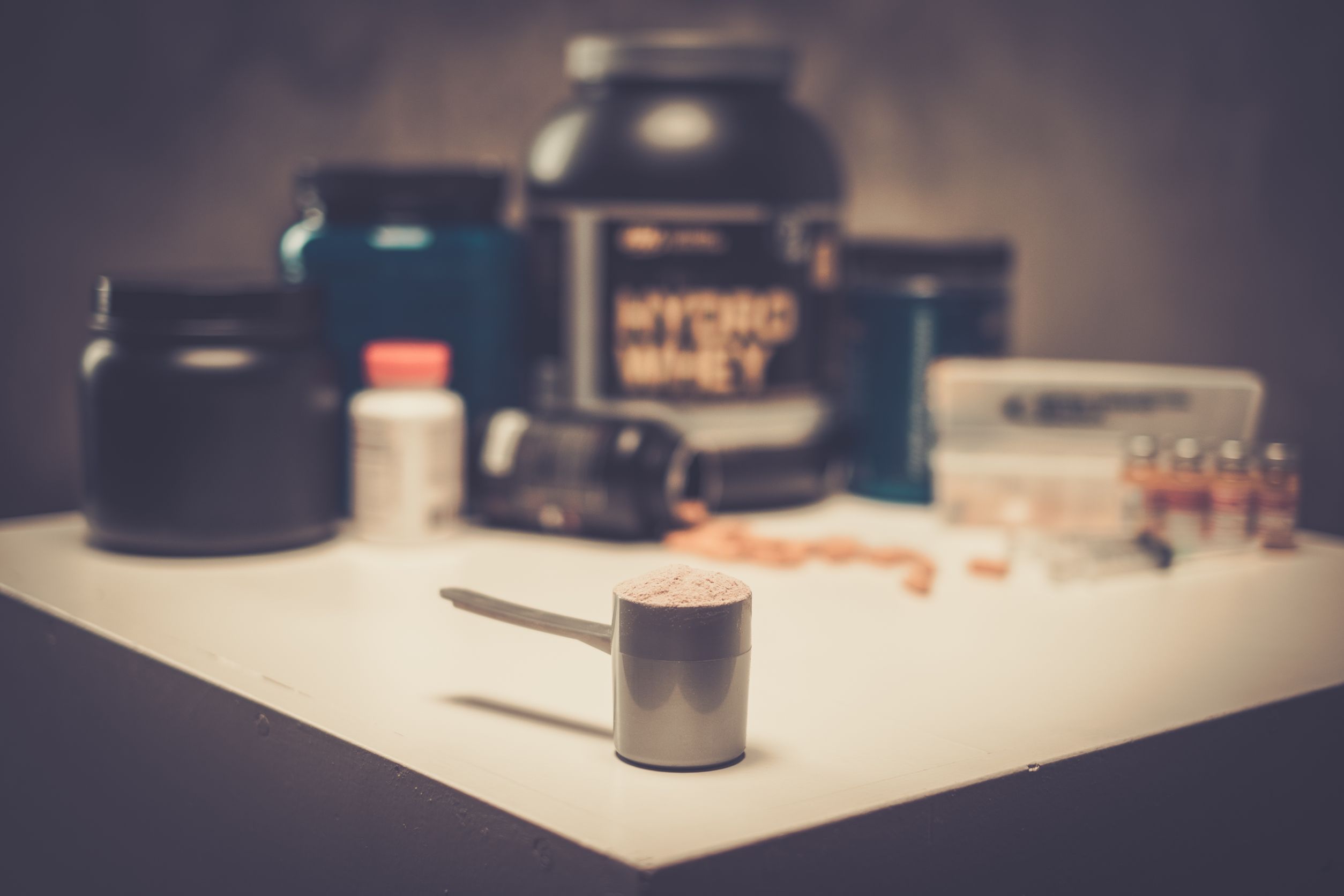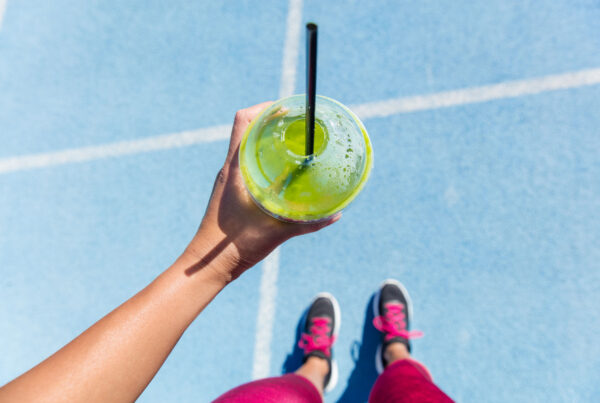”There seems to be an endless amount of supplements that claim to help improve performance. Check out this week's article to learn which supplements are backed by research and where we need to learn more.
Reading time: 10 Minutes
MWi Hacks:
- Use these performance tips to enhance your knowledge on supplements
- Learn what supplements best enhance certain aspects and performance and recovery
“Pill fatigue” is real with many #supplements, so try for extracts & powders in shakes & smoothies, says @spikesonly.
Two years ago, I wrote an article listing the best sport supplements for athletes and I am surprised by how often coaches still reference it. I wish I had followed up with an addendum to it in 2017, but in reality, not much had changed that demanded one. However, now the timing is perfect with today’s new research.
In this blog, I list the most “bang for your buck” supplements that athletes should consider using. While I do mention some brands, I don’t like getting too narrow because some options here in the U.S. are not available in other countries (and vice versa). Some readers may be disappointed that the list is relatively short—the reason is that more supplements don’t work and some are so ineffective that they are a waste of money. In addition to the list, I cover products to avoid and hint at the games companies still play with coaches and athletes.
How I Created This List and Why We Need More Research
This list is very similar to one I created at the end of 2015, since many supplements will likely be timeless and not much will change for 2019 unless something dramatic happens in the supplement world. It is a pure supplement list: meaning, if it’s not a pill or powder, I consider it a food product or a functional beverage. For example, a sports bar is technically a food product, so while the Australian Institute of Sport considers it a sports supplement, I consider it a convenience food or meal replacement. Also, many isolated food products like dried animal proteins and other products like gels and sport confectionaries are just “calorie candies” for ultra-endurance athletes who have a sugar luxury that most fitness and even speed and power athletes don’t have.
What is missing are products like HOTSHOT and beta-alanine, as they are scientifically supported but not exciting to me for either the Human Effect Matrix or in current research summaries. We need to do more research on muscle cramps and either accept beta-alanine as effective or something that may work for some athletes. Also, the tingling sensation that some athletes manage is similar to the indigestion problems that sodium bicarbonate users experience.
Finally, some of the weaker supplements likely just mask a lack of commitment to sleep and dietary practices, so don’t worry about missing out on the cutting-edge products. For example, take a look at bovine colostrum, a product that continues to create confusion like BCAAs (branched chain amino acids) did for years. Those two products are protein options that may show up in the research, but unless you consider the controls (nothing or water), they are not going to do much unless you are undereating.
For years, I was a huge fan of BCAAs as an alternative to sports drinks and thought they had a benefit for central fatigue, but the reality was that early research on most supplements is promising and makes it easy for coaches and athletes to want them to work. Nearly jaded, it is very hard for me to support most supplements as they never seem to hold up to the hype that comes with them.
The Top 10 Speed and Power Supplements for 2018
Now for the list. I mostly include nutrients that are possible to get from eating well, but not in realistic amounts. For example, you would have to eat pounds of mushrooms to get the large dose of vitamin D you need, and eating enough fish or another food source high in omega-3s is just not something most athletes can stick to. If athletes don’t like the taste, even the dedicated ones will give up after a few weeks.
One note: Something I call “pill fatigue” is real with many supplements, so try to get extracts and powders for shakes and smoothies. Some products provide shots or liquid options, like oils and probiotics, so do what you can to minimize the pills.
Vitamin D
My most-loved supplement is vitamin D, as I have seen it literally save athletes in the NFL who constantly struggled with muscle pulls and similar. While any training program can protect against injuries to hamstrings and ACLs, not taking vitamin D is like skipping leg day. The research on contact and non-contact injuries and vitamin D is too strong to ignore, and major studies done by the Giants, Steelers, and NFL Combine are enough for anyone in sport to say vitamin D is a game changer.
I prefer to think about vitamin D as a muscle hormone instead of a bone support supplement. While coaches in most collision sports like rugby and football are worried about fractures, for some reason muscle performance excites athletes far more than bone health. Athletes with darker pigment levels need to take more vitamin D on average, especially if they live in northern climates and spend most of their time indoors. Trying to get enough sun as an athlete is futile, since the world is now an indoor world and modern competition schedules force athletes to become athletic vampires. Sleeping during the day because of night games and travel robs the modern professional athlete of leisure time in the sun, and taking a vitamin D supplement is now mandatory for anyone I work with.
Omega-3s
Fish oils and other sources of omega-3s seemed to have lost momentum 10 years ago, then the company Brain Armor and the research on concussions really revitalized interest. Omega-3s were something I felt were important, but the research was very light on evidence. Most nutritionists agree on the value of omega-3s as safe and useful, but the supplement only became fast-tracked to something more than just a “heart healthy” option for seniors after the NFL started to have some controversy.
Now algae supplements are growing in popularity, due to the fact they have no aftertaste and don’t need to deal with fish allergies. Still, the fish oil industry isn’t going anywhere, and there is growth in sustainable and more earth-friendly options. Use of the Omega Index, a blood test to evaluate consumption or compliance of omega-3s, is also growing with nutritionists wanting to ensure athletes are, in fact, taking their supplement. There are other emerging benefits with omega-3 research, like reaction time and vision, and down the road we will see how much impact there is in sport.
Coffee
The biggest mystery to me in sport is why caffeine seems to be forgotten all the time. Perhaps because caffeine is so cheap and readily available, it doesn’t get the love that creatine and other supplements do. Also, caffeine is not just a great stimulant—like creatine below, it should be considered a brain nutrient. Coffee is technically not a supplement, but due to its strong ergogenic benefits, I consider it part of a supplement program as it’s so powerful. While concussions are obvious worries with athletes, they should think about other general brain health risks, such as Parkinson’s and Alzheimer’s.
Coffee also creates a dilemma for those wanting a boost when stacking supplements, as the use of a beetroot product is negated when consumed with caffeine. Therefore, those using beetroot products with caffeine are wasting their money. Most athletes will not give up their morning cup of joe, and the taste of beetroot juice isn’t for everyone. While I agreed with the Martin Buchheit summary on beetroot supplementation, some athletes do respond better to N02 supplements while others don’t respond at all. I prefer vasodilators for relaxation benefits after heavy training as they match parasympathetic activities rather than acting as boosting agents.
Protein Powder
While most athletes can get enough protein from whole food sources, powders are convenient. They’re also great for larger athletes who simply have a harder time consuming protein. Additionally, a good protein powder, even a pricey option, is still inexpensive compared to fresh meat sources. Whey protein, for example, has plenty of other health benefit besides repair, so protein powders don’t just build muscle—they build bodies. The portability of protein powders also makes them indispensable for athletes with rough schedules or recreational athletes who are pressed for time.
The only reason I own blenders is to mix proteins, as powder extracts are great for those who need more calories from trying to grow in size and practice long hours. A modern football player in college may train twice a day, and fueling those workouts can be a challenge. Other protein powders exist, but if you have a shake two to three times a week during peak periods, that should not create food allergies (as reported in the early 2000s). I have had a few athletes simply not respond well to whey or milk protein, but some have found lactose-free whey to be an alternative to the “chocolate milk for recovery” option that many nutritionists think is sufficient.
Creatine
In the late 1990s, creatine was all the rage, and then over time, like most tried-and-true supplements, it was replaced—in this case, by newer options such as tart cherry juice. Creatine is safe, effective, and very inexpensive, on average. Some speed and power athletes feel that water weight is an issue, and I agree. We use creatine during early training periods and get off it during the late spring and early summer. We have never had a cramping issue with creatine and, in fact, the research is supportive that it may actually reduce cramps. While HOTSHOT may be a better supplement for cramping (it still needs research), I find that fatigue is more of a variable than nutrition with cramping.
Don’t view creatine as just a muscle enhancer; instead, see it as a body nutrient with repeated power benefits. It will never be a maximal strength product, but it adds a few extra gallons to the gas tank. Still, doing more work and a higher quality of work will add up at the end of a season, so creatine is one of these staples that any speed and power athletes should consider, especially if they want to add muscle mass.
Magnesium
Blood testing for magnesium won’t be a clear indication of adequate levels of magnesium because the body can recycle the bioactive element from the bones. Maintaining serum magnesium, even RBC magnesium, is not evidence to say that an athlete’s diet is rich in that nutrient. A mucosal test for magnesium exists, but the burden of testing that, as well as the research on magnesium being part of so many functions of the body, means supplementing makes the most sense. Most athletes think zinc is more important, but to me, magnesium seems to be more important due to the influence it has on hormones and muscle performance.
Some forms of magnesium may create a little problem with loose stools, so taking it twice a day in smaller doses is a good step. Most athletes will see ZMA available and simply take that instead of a pure magnesium option, and if that is more accessible because of NSF accreditation, that is fine.
Iron
Every female endurance athlete should take an iron supplement at least as an insurance policy, and even if you supplement, variables like gut health and inflammation may be a wild card. Male speed and power athletes, especially in field team sports like soccer, should consider taking iron because it’s easy to have a diet not completely fill the need for iron, even one with red meat. Anemia is common with all athletes, and low iron can ruin an athlete’s season or even increase their risk of injury because it magnifies fatigue. Iron supplements are not exciting, but if you are low on iron, your ability to transport oxygen is impaired.
One suggestion I have is to take iron with a banana and vitamin-C-rich drink. I tend to have athletes drink watermelon juice with their iron pills because one serving is enough to help with absorption, and refreshing enough that they want to drink it. It isn’t expensive to blood test ferritin levels and track hemoglobin levels, and if you don’t do it as (or for) an endurance athlete, you are playing Russian roulette.
Sport Probiotics
SimpliFaster’s blog has two excellent articles on probiotics, both written by Katie Mark. While we don’t yet fully understand the microbiome, we do know that it’s worth supplementing athletes with probiotics because it’s not a gimmick. One of the most fascinating lessons I learned using probiotics with athletes is that they are catalysts for other supplements like iron. Many athletes have poor gut health, and when absorption is impaired, it compromises the entire system. One athlete of mine struggled for years to get enough iron in his body, but only after probiotic supplementation did he restore his ferritin.
Athletes who travel should consider a probiotic as the first line of defense—more than vitamin C. The amount of vitamin C you get from a really fresh diet is enough to be healthy, as we now know the body naturally creates antioxidants internally to manage stress, and eating a really well-rounded diet and drinking the right fruit beverages will fill in the gaps. Don’t think that yogurts and other food products such as pickled foods are enough to make a difference; they are more complementary because they usually have limits to the variety of strains.
Ashwagandha
The only herb on the list is an ancient remedy, called an adaptogen due to its ability to help users cope with stress. I am not a big fan of herbs, since they can get athletes off of a food mindset and into the world of potions and magic elixirs. Ashwagandha is one of the supplements I caved on because I had a few athletes in pro sport that finished a season strong statistically, but needed a break mentally and physically. Even after taking time off, most of them still had issues with sleep and couldn’t get out of the funk they were in.
We supplemented with a sport product that had small amounts of ashwagandha and literally had to triple the dose to match what the scientific literature used. The result was that a few weeks later they all were all notably fresher, happier, and sleeping like teenagers. A few months afterwards, every one of them hit records in their offseason training, even though some of their ages were approaching the other side of 30.
The big trouble with herbs is getting them certified safe for sport, as they’re not a popular sports product and most supplement companies that use them, like Onnit, struggle to come up with a formula that doesn’t succumb to label dressing. In the next few years, I expect an NSF adaptogen product that is affordable and has an efficacy supported by research. EXOS partnered with Onnit, but they seem to fail at keeping momentum with their supplement strategies, as they made deals with EAS and Thorne Research years ago that didn’t seem to excite the market.
Gelatin
Last, but not least, is the most talked-about supplement in the last year, for good reason. Gelatin has promise with joint repair, and most of the sports medicine and sports performance market is rushing to it as a savior for tendon injuries. Keith Barr, an expert on molecular science, has been promoting gelatin recently and some skepticism exists as to how much it can really do for athletes. I am a little cautious, as tendons are more about total nutrients than gelatin and vitamin C. The study performed was also specific on nutrient timing and genetics, so perhaps we shouldn’t be that hard on those who fought against just “eating healthy.”
What is great about gelatin is that you can add juices to it and, while most of the nutrients are lost in the mix, some athletes have found that tart cherry and other health juices make great-tasting desserts. To me, gelatin is a low-calorie option that seems to have enough science behind it to try, but I wouldn’t hedge all my bets just yet. Again, the supplement is a little early in my opinion, and we need more studies to be really sure it does the trick.
Last Parting Thoughts on Supplements
This list will likely be the same for next year unless something shows up on one or two of the supplements above that proves that they are not worth including. I should include a juice list or top list for bars and snacks, but that is far harder because of taste preferences and rationalizing what should or shouldn’t be a priority.
Anything you suggest your athletes take, or if you are an athlete and take supplements, make sure they are certified safe. When in doubt, it’s better to just accept the possible loss of a tiny edge than risk a lifetime of unfair shame because of contamination. The problem is not that bad with this supplement list, as they are mostly nutrients, and the likelihood that there will be a banned substance found in vitamin D or magnesium is super low.
Most of the issues we see with contamination are athletes not knowing what is on a label, rather than what is not listed on the label causing a problem. The supplement industry is improving, but it still has a long way to go. In the meantime, several companies are committed to helping athletes and have been doing a great job with their products for years.
MWi would like to thank Carl Valle for writing this article and supporting our community with expert insights. Follow this link to read the original article:
Carl Valle
Coach Valle has coached Track and Field at every level, from high school to the Olympic level in the sprints and hurdles. He has had the privilege of working with great athletes that have been All-American and school record holders. A technology professional, Coach Valle has expertise in performance data as well as an understanding for practical application of equipment and software. Carl is currently the director of innovation for InsideTracker, and focuses his time on testing elite athletes and using technology to help everyone on any level of human performance reach their goals.






